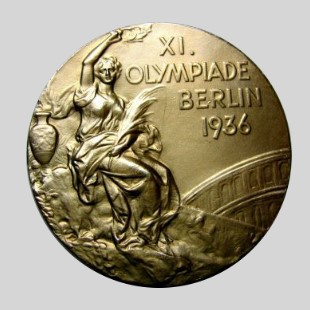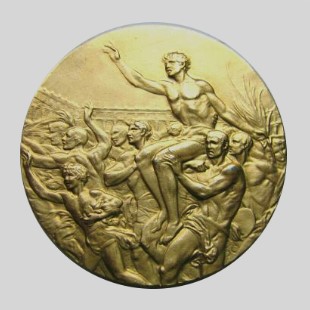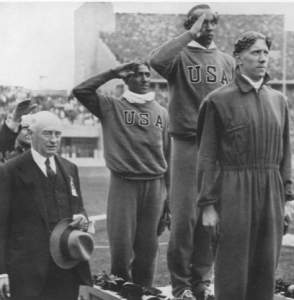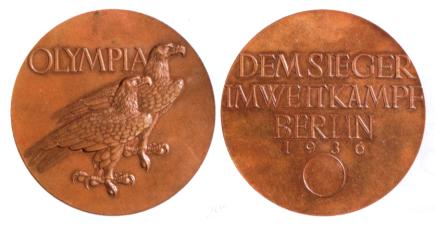Winner Medals


| 1st Place: | Gold Medal | Material: | Gilt Silver |
|---|---|---|---|
| Weight | 71 gr | ||
| 2nd Place: | Silver Medal | Material: | Silver |
| Weight | 72 gr | ||
| 3rd Place: | Bronze Medal | Material: | Bronze |
| Weight | 74 gr | ||
| Diameter: | 55 mm | Design by: | Prof. Guiseppe Cassioli, Florence, Italy * 22.10.1865 + 05.10.1942 |
| Mint: | B.H.Mayer | ||
| Thickness: | 3 mm | Ribbon: | None |
| Obverse: | Victory seated above stadium holding palm branch. | ||
| Reverse: | Winner carried by jubilant athletes. | ||
| Numbers of Medals: | Gold: 320 Silver: 320 Bronze: 320 | ||

Honouring of the victors in the 100 metre event, 1936
Left to right: Mercalfe, Owens and Osendarp.
| Winner Medals 1936:
According to the Olympic Statutes, medals of victory are to be awarded in silver-gilt, silver and bronze to the victors in the various Olympic competitions. The design of the Italian sculptor, Professor Cassioli, Florence, was selected by the International Olympic Committee in 1928 as the permanent Olympic medal, the inscription being changed to correspond to each Olympic Festival. The Organizing Committee was therefore obliged only to provide an adequate number of medals from the mould, which is placed at the disposal of the proper Organizing Committee on the occasion of each Festival. This task was awarded to the firm of B. H. Mayer, Pforzheim, a total of 960 medals being produced. (Source document: Official Report 1936, page 125) |

|
